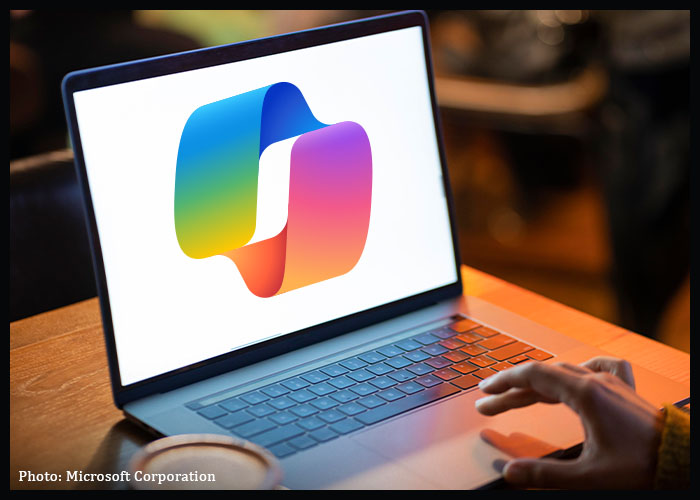Table of Contents
In a groundbreaking move, Microsoft has introduced a new feature for its AI assistant, Copilot Vision, which has the ability to analyze and interpret the web pages you visit in real-time. This experiment represents the latest advancement in Microsoft’s ongoing push to integrate artificial intelligence (AI) across its product ecosystem. Copilot Vision aims to assist users by providing enhanced context-aware insights, recommendations, and suggestions based on the content they’re actively engaging with online.
However, the announcement has also raised important concerns around privacy, data collection, and AI-driven personalization, given the depth of information such a feature could potentially access and process.
What Is “Copilot Vision”?
Copilot Vision is an extension of Microsoft’s Copilot, an AI assistant that integrates with products like Microsoft 365 and Azure to streamline tasks, automate processes, and enhance productivity. The new “vision” feature takes this a step further by using AI to not just assist with office applications, but also track and interpret the user’s web browsing habits.
In practice, Copilot Vision can “see” what you browse, analyze the content, and provide recommendations or complete actions based on that information. For example, if a user is researching a particular topic or browsing shopping sites, the AI could offer links, insights, or even price comparisons without any prompting.
“We are pushing the boundaries of what AI can do in personal productivity. Copilot Vision allows users to access real-time insights without interrupting their workflow, creating a more seamless online experience,” said Satya Nadella, CEO of Microsoft, during the announcement (source).
Privacy Concerns and Data Transparency
While the potential benefits of this technology are significant, it has also led to questions regarding user privacy. The idea of an AI assistant monitoring browsing habits might sound invasive, and privacy advocates have raised concerns about how this data could be stored or used.
According to Wired, privacy advocates are calling for Microsoft to provide clear transparency on how data is processed and anonymized, if at all. In response, Microsoft has indicated that user control will remain a cornerstone of the Copilot Vision feature, ensuring that users can choose what browsing data, if any, they allow the AI to process. A spokesperson from Microsoft stated:
“We are committed to empowering users to control their own data. With Copilot Vision, users will be able to opt in and out of any web page tracking, ensuring that their privacy preferences are respected.” (Wired).
The company also assured that browsing data would not be shared with third parties without explicit consent and that all data collected for AI purposes would adhere to Microsoft’s Privacy Standards, which comply with global regulations such as GDPR and CCPA.
How Does Copilot Vision Work?
Copilot Vision uses natural language processing (NLP) and machine learning (ML) to understand the content of web pages. It can analyze text, images, and even the structure of a website to provide useful recommendations in real-time. This feature builds on the success of Microsoft’s Bing AI, which has been integrated into its search engine to offer contextual answers and summaries based on user queries.
For instance, if you are reading an article about the latest tech gadgets, Copilot Vision might provide you with links to product reviews, comparisons, or even direct purchasing options from trusted online retailers. The AI analyzes the context of your activity and proactively assists without needing direct commands.
In a demonstration published on The Verge, Microsoft showed how Copilot Vision could help users find more detailed information on technical subjects, flag important updates related to the content they browse, or suggest relevant resources for research (The Verge).
Potential Applications and Ethical Questions
The potential for Copilot Vision extends beyond personal productivity. Its ability to “see” what users browse could help companies in e-commerce, research, and advertising. By understanding user interests more intimately, brands can tailor experiences in real-time, offering highly personalized services based on immediate online behavior.
However, this also raises ethical concerns about digital surveillance and the role of AI in monitoring online behavior. Critics argue that the thin line between “assisting” and “tracking” could lead to misuse, especially if such data were to be sold or shared without adequate safeguards. As Cory Doctorow, a privacy expert and author, stated:
“The concept of AI-driven browsing insights is fascinating, but we have to ask where the line is drawn between convenience and invasive surveillance. The onus is on tech giants like Microsoft to protect users from becoming products of data exploitation.” (TechCrunch).
The Future of Copilot Vision
Microsoft’s introduction of Copilot Vision signals a shift towards hyper-contextualized AI assistance. As more aspects of daily life become integrated with AI, there’s no doubt that these kinds of tools will become increasingly prevalent. The ability to merge AI with personal browsing in real-time could revolutionize how we interact with information and make decisions online.
For now, Microsoft has positioned Copilot Vision as a feature aimed at enhancing user experiences, but it is clear that ongoing scrutiny regarding privacy will shape how this technology evolves. As more details emerge, Copilot Vision’s success will likely hinge on its transparency and the level of control users have over their data.
To stay updated on new AI trends like Copilot Vision and get expert analysis, follow @cerebrixorg on social media platforms!
Ethan Kim
Tech Visionary and Industry Storyteller
Read also
November 19, 2024
November 19, 2024
November 19, 2024

